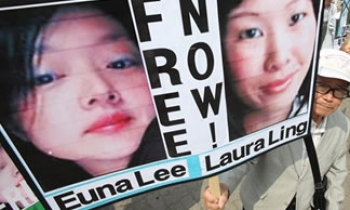NEW YORK – If you made a list of today's great media innovators you'd probably fill it with people whose dazzling ideas are shaping the Internet, television and even radio.
Not newspapers, though. The industry is famously risk-averse. You might not need both hands to count the big ideas that have wowed the public with their originality since 1880 when dailies began running photographs, or possibly 1897 when The Yellow Kid became the first comic strip with color.
But stop the presses. Media's sleeping giant is waking up.
Executives throughout the industry, which generated an estimated $65 billion in revenue last year, are opening their minds to a host of ideas, including new paper publications, television and radio services, websites, podcasts and transmissions to cellphones.
"I don't think I've ever seen the sense of innovation and willingness to take risks that I'm seeing now," says John Kimball, chief marketing officer of the Newspaper Association of America (NAA).
One indication of that is the recent launch of a yearlong. $2.25 million initiative by the industry-supported American Press Institute to design a new business plan for companies grappling with competitors on the Internet and other new media.
"Across the industry the message I pick up is, 'Oh my God. It's slipping away. What can I do?' " says Stephen Gray, managing director of the initiative, called Newspaper Next. The answer, he says, will require "a shift of thought from, 'How do we get people to read more newspapers?' to 'What problems are people trying to solve in their lives, and how can we help?' "
Most major companies have already started to adjust.
For example, in the last year, The New York Times bought Web information service About.com and launched TimesSelect, an offering of additional information and opinion online to those who subscribe to the paper or pay about $50 a year.
Dow Jones bought Web financial news service MarketWatch, created a Saturday print edition of The Wall Street Journal and launched an Internet blog for lawyers.
And Gannett, parent of USA TODAY, recently blended this newspaper's print and online newsrooms and bought a minority stake in 4INFO, which enables cellphone users to quickly get sports scores, weather forecasts, movie times and other information.
Some local papers are even more ambitious.
Gannett's The Arizona Republic gave the Internet a bear hug, joining forces with the company's local TV station, KPNX, at azcentral.com, a website that blends text and video as well as news in Spanish. The paper also publishes special news sections for different communities, free local magazines about fashion and lifestyle, and publications offering TV listings and classified ads in Spanish.
Similarly, Belo's The Dallas Morning News has its own fashion and lifestyle magazines, a free weekday tabloid for commuters and a Spanish-language daily.
These innovations are "not something that many newspapers felt a need to do, or had a willingness to do, historically," Belo CEO Robert Decherd says. "But people's media habits have changed in fundamental ways. ... Ten years ago it was pretty simple. Now you have to have a suite of products and advertiser opportunities."
Double-edged Web
The Internet inspired a lot of new thinking.
Publishers liked the additional pathway to readers and advertisers. Last year the number of unique visitors to the 25 most popular newspaper websites increased nearly 37%, to 56.9 million, according to Media Metrix. And this year, close to 5% of all newspaper ad revenue will come from the Internet, the NAA says.
The new medium also, however, enabled a fast-growing collection of rivals to provide news services that appeal particularly to young readers.
Total newspaper weekday circulation fell about 2.4%, to 54.6 million, from 1999 to 2004. Sales in the 100 largest markets fell 2.9% in the year ending on Sept. 30, according to a Credit Suisse analysis of data from the Audit Bureau of Circulations.
The Internet also gave direct marketers – including companies such as Google, Craigslist.com and Monster.com – opportunities to go after the help-wanted, real estate and auto classified ad sales that newspapers used to own.
Challenging profit picture
These factors, plus an anemic overall ad market and rising newsprint costs, dented newspaper profits. Publicly traded companies collectively reported newspaper operating margins of 19% in the first three quarters of 2005 vs. 20.5% in 2004, according to MG Strategic Research.
Growing uncertainty about newspaper companies' prospects contributed to a 20% decline in the collective value of newspaper company stocks in 2005.
Investors are waiting for proof to support executives' predictions that their new ventures will pay off.
"It's a story that's hard to tell because (newspapers) don't break out the numbers," says MG Strategic Research President Miles Groves.
Still, he adds, with newspapers "losing share and circulation, you're going to have to have a major shift in the business model with something broader than ink on paper."
Here are some of the initiatives gaining most favor with industry watchers:
Hyperlocal news.
Lots of media outlets cover what's happening across the world, nation, state or even a major metropolitan area. Companies that pay millions for printing or broadcast equipment and reporters want to spread the costs across as many homes as they can reach.
The problem is that people care most about what's happening in their own neighborhoods.
That's why many executives are watching what privately held Morris Communications is doing with Bluffton Today. The free, ad-supported, 32-page daily newspaper and associated website were introduced last April for a South Carolina town of about 28,000.
Few local developments seem too minor for the tabloid-sized paper's 12 reporters. Recent editions included stories about the new school crossing guard, happenings at the Bluffton garbage dump and the closing of a roller skating rink that also served as a bingo hall.
High school sports rule. And standing features cover subjects such as pets, grandchildren and gardening.
And unlike most local newspapers, Bluffton Today also runs on its website lots of pieces and blogs that local residents write. That includes a daily blog from the high school principal.
"We call it a community in conversation with itself," says James Currow, Morris' executive vice president for newspapers. "This thing has just taken off. It has the highest readership of any paper in our company," attracting about 95% of the community.
Executives won't discuss the paper's profits. "This is an experiment," says Jim Smith, Morris Publishing Group's vice president for market research. "I don't think it would be staffed at this level in a rollout."
Still, they say that other companies should try the Bluffton model elsewhere.
"You've got to get to the neighborhood level," Smith says. "You need dozens of these in a community." He says that as mega-retailers grow – especially infrequent newspaper advertiser Wal-Mart – "We've got to operate in a more diverse way and get to be part of the daily commerce of the area."
The Newspaper Association of America's Kimball also sees promise in hyperlocal news with significant reader input.
"Any newspaper could do that," he says. "Maybe you get high school students to write about football games."
But MG researcher Groves, for one, says that enthusiasm for the formula could collapse if many reader-generated pieces prove to be inaccurate or self-serving.
"You get the local school and the local this and that, but who's providing the quality control? There's this thing we worry about that's called trust. That's what allows publishers to make money. If you don't have that, then what do you have?"
New media.
Just about every newspaper is exploring the Internet and other new media, but few as aggressively as E.W. Scripps' Naples Daily News in Florida.
"We offer content over iPod, cellphones, PlayStation, TV, radio and magazine," says John Fish, president and publisher. "We want to be platform agnostic. What's the best way to tell that story? Does it need video or audio?"
He's particularly proud of the company's staff-generated podcast. "It's a local news version of public radio," he says.
Now it's gearing up to produce a 15-minute video newscast that it will post on the Web daily at 4 p.m. It's talking to Comcast about offering the show four times a night on the cable operator's local channel.
Fish is also excited about new technology that connects the paper to readers via phone.
"We can call to remind you about events on your calendar. We can call you after each quarter in a football game to tell you what the score is. We'll make a daily wake-up call and tell you the weather as well."
Such ventures can be costly. The Daily News has 20 people working on new media and six more who handle ad sales.
But he says new media profits are "a good bit higher than our print margins" and represent a smart investment. "It's just going to grow in the future. And if we don't provide the services, someone else will come up under us."
Mini-dailies.
Commuters in many cities no longer have to pay for a newspaper. They can grab one of the new breed of tabloid-size papers, usually targeted to young adults, that many companies hand out free.
For example, Sweden's Metro International offers mini-dailies in New York, Boston and Philadelphia. Tribune Co. gives away AM New York and Chicago's RedEye. The Washington Post has Express. And billionaire Philip Anschutz, who owns the San Francisco Examiner, introduced mini-dailies in San Francisco and Washington, D.C.
The business model seems to work. For example The Dallas Morning News' 2½-year-old mini-daily, called Quick, should begin generating cash flow this year, Decherd says.
He says he's not worried about that cash coming out of the hide of the local flagship publication. "It's a different ad base, and it's priced differently."
Nor is he concerned about the mini-dailies' obsession with local entertainment and pop culture, something that makes many traditional reporters cringe.
"Our consumer-driven society is about a lot of things besides hard news," Decherd says. "Americans spend a tremendous amount of time focused on their lifestyles. We have to listen to our audiences to some extent."









